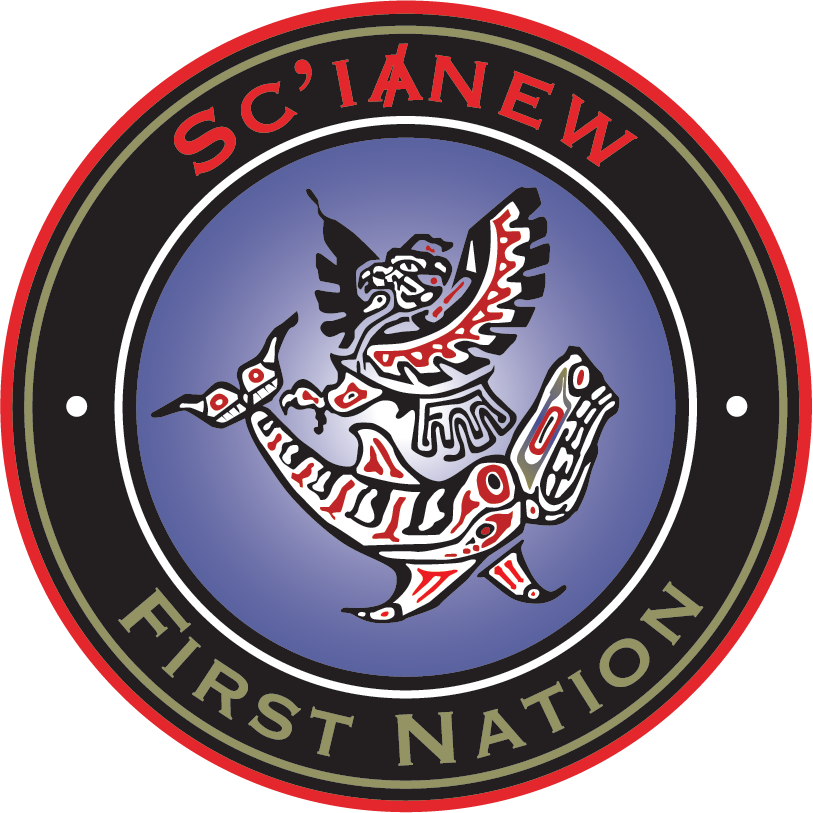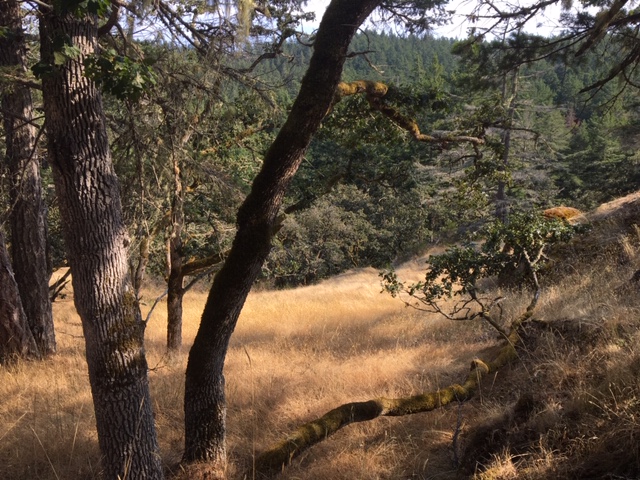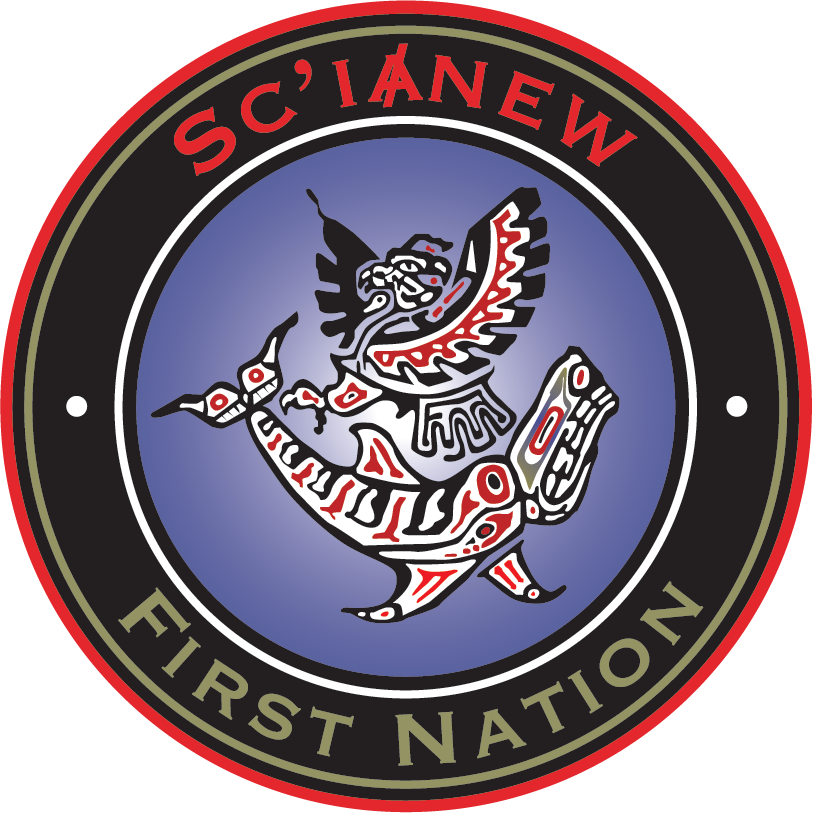Thanks to the help of several community partners, SC’IA⁄NEW Nation is now on track to reclaim the land currently known as Mary Hill through the treaty negotiation process led by the Te’mexw Treaty Association (TTA).
Mary Hill is a 176-hectare piece of land on the southern tip of Vancouver Island. It is a part of both the Coastal Douglas-fir ecosystem – “the smallest and rarest ecological zone in British Columbia” (“BC”) and home to “15% of the remaining protected old-growth Coastal Douglas-fir in the world” – and the Garry oak ecosystem, which “contains more species at risk than any other ecological zone” in BC. 31 rare species call Mary Hill home, including the Sharp-tailed snake, Western Screech Owl, Peregrine falcon, and many more.
While Mary Hill is in the heart of SC’IA⁄NEW Nation’s traditional territory and holds important cultural elements such as burial cairns, it has been closed to the public since World War II due to its use by the Department of National Defense (“the Department”).
In 2018, the Department declared it no longer needed much of the land at Mary Hill, creating an opportunity to return 176 hectares of land to SC’IA⁄NEW Nation.
Since then, SC’IA⁄NEW Nation has worked with the TTA to reclaim Mary Hill as Treaty Settlement Land through the BC Treaty Process – a process by which the colonial government is actively pursuing “modern Treaties with First Nations.” Mary Hill is particularly significant because it is “the only suitable Crown land available for treaty negotiations.”
If Mary Hill is successfully transferred to SC’IA⁄NEW Nation from the Department through the BC Treaty Process, SC’IA⁄NEW Nation will designate the land as a Tribal Park.
Tribal Parks can be understood through the lens of Indigenous Protected & Conserved Areas (IPCAs). An IPCA is a conservation area “owned and governed or co-governed by Indigenous communities, often reflecting Indigenous laws and legal orders.” While Tribal Parks and IPCAs are similar concepts, “Tribal Parks prioritize Indigenous rights and responsibilities by acknowledging the relationship between Indigenous peoples with land and waters” and are less likely to include “collaborative conservation initiatives that might not fall fully under the sole authority of a specific First Nation.” There are four other Tribal Parks on Vancouver Island, including Wah-nuh-jus – Hilth-hoo-is, Tranquil Tribal Park, Ha`uukmin, and Esowista Tribal Park.
Designating Mary Hill as a Tribal Park has the potential to increase economic security for SC’IA⁄NEW Nation – a critical incentive to encourage community members who have moved off-reserve to move home – while preserving an important piece of land and the species that call it home. Designating Mary Hill as a Tribal Park also creates educational opportunities for the community, such as learning about Indigenous plants, engaging in stewardship initiatives, and ranger training.
The decision to designate Mary Hill as a Tribal Park was made possible thanks to the support of several community partners with an interest in protecting Mary Hill as a natural area – including the District of Metchosin, the Habitat Acquisition Trust, and Pearson College UWC. While SC’IA⁄NEW Nation initially considered developing the land, these community partners stepped up to explore what it would take to designate Mary Hill as an IPCA.
To ensure the partners’ efforts had an opportunity to come to fruition, SC’IA⁄NEW Nation signed a “Standstill Agreement” on February 24, 2022, agreeing to focus solely on the potential to turn Mary Hill into an IPCA – thus delaying any consideration of development – for 18 months. SC’IA⁄NEW Nation and the project partners gathered at Metchosin Municipal Hall to announce and celebrate this agreement on February 24th, 2022. On August 23rd, 2023, SC’IA⁄NEW Nation and the project partners agreed to extend the Standstill Agreement through February 2024. In April of 2024, after consultation with the community, SC’IA⁄NEW Nation decided to use the term “Tribal Park” in place of IPCA.
For the duration of the Standstill Agreement, the partners engaged in significant planning initiatives to support the transition of Mary Hill into an IPCA or Tribal Park, ultimately creating a formal proposal for the members of SC’IA⁄NEW Nation. After reviewing the proposal, 81% of community members voted to move forward with the Tribal Park designation rather than utilizing Mary Hill for development.
The community partners also engaged and continue to engage in significant fundraising efforts to support the creation of a Tribal Park at Mary Hill. The fundraising initiatives are critical because if Mary Hill is transferred to SC’IA⁄NEW Nation through the BC Treaty Process and then turned into a Tribal Park, SC’IA⁄NEW Nation must be compensated for the loss of use of the land for development purposes. Creating funding for this compensation is a key part of the partner’s ongoing fundraising efforts.
Funders contributing to this effort include the Lake Family’s All One Fund, the colonial government’s REDIP Fund, Community Foundations of Canada, The Conservation Alliance, Glasswaters Foundation, Metcalf Foundation, Metchosin Foundation, Pete Gilgan Foundation, Te’mexw Treaty Association through Environment and Climate Change Canada, Vancity, Victoria Foundation, and the Victoria Natural History Society.
In addition to participating in fundraising and planning initiatives, Pearson College UWC has offered to contribute 14 hectares of adjacent land to the Tribal Park. Pearson is particularly invested in a Tribal Park outcome because maintaining Mary Hill’s “wild and undeveloped” status supports the College’s experimental educational initiatives “where students may have the opportunity to learn on the land” alongside SC’IA⁄NEW Nation.
SC’IA⁄NEW Nation celebrates this opportunity to work in partnership with the community in a historic act of reconciliation and looks forward to the many opportunities that will arise once SC’IA⁄NEW Nation resumes stewardship of Mary Hill.


